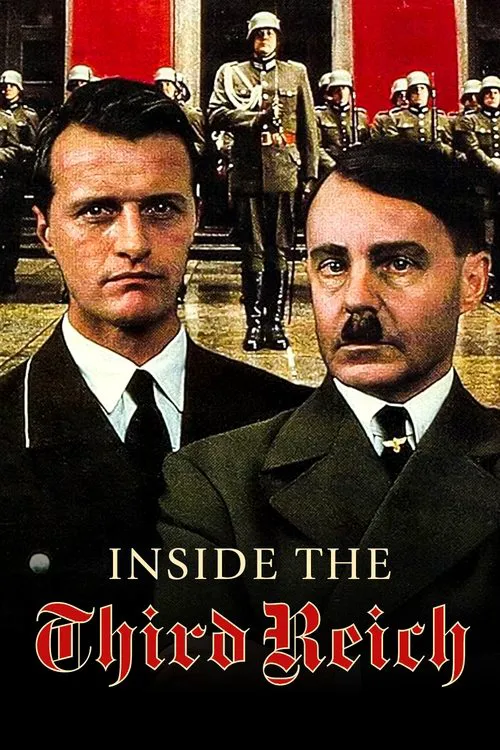Inside the Third Reich

Handlung
Inside the Third Reich, released in 1982, is a historical drama film directed by Marvin J. Chomsky. The film is based on the autobiographical book of the same name by Albert Speer, who not only serves as a writer, but also a central figure of the film. The title refers to Speer's rise to prominence within the Nazi party, as well as his reflections and introspection on his role in the Third Reich. Born in Mannheim, Germany, in 1905, Albert Speer was an ambitious young architect who initially gained recognition with the construction of the German pavilion for the 1936 Summer Olympics in Berlin. His talent and dedication caught the attention of Adolf Hitler himself, who was immediately drawn to Speer's vision and innovative architectural concepts. The charismatic and confident Speer skillfully exploited Hitler's affinity, eventually gaining the leader's trust and confidence. The film depicts Speer's early rise within the Nazi party, including his appointment as the chief architect of the German government. Speer's exceptional talent enabled him to effortlessly navigate the treacherous waters of Nazi politics, forging alliances and securing crucial appointments. Speer soon became known as Hitler's 'favorite architect,' and Hitler himself took a keen interest in Speer's personal life. The film showcases Speer's close relationship with Hitler, as the latter's obsession with grand architectural projects, including the construction of the German parliament building, and a 'Germanic Hall of Fame,' grew more pronounced. Speer skillfully exploited this obsession to fuel his own rise up the hierarchy, cultivating Hitler's trust and reliance on him. However, Speer's ascent within the Nazi party eventually became tainted by his complicity in the regime's atrocities. Speer participated in the planning and coordination of various monumental architectural projects, including the construction of concentration camps and military facilities. His knowledge of Hitler's inner workings made him a valuable asset, but Speer's conscience began to trouble him as the true nature of the regime came to light. As World War II intensified, Speer's relationships with his peers within the party became strained, and Hitler's grip on reality began to slip. Speer struggled to reconcile his professional ambitions with the increasingly brutal nature of the Nazi regime. Inside the Third Reich presents a nuanced portrayal of Speer's character, exploring the fine line between opportunism and true conviction. As Speer's involvement in the regime deepened, he found himself increasingly trapped by his own ambitions. His ultimate complicity in the Nazi's war crimes weighed heavily upon him, especially after Germany's defeat in 1945. The film adaptation is notable for its attention to period detail and its thought-provoking exploration of moral ambiguity. Speer's conflicted conscience, as well as his reflections on the aftermath of the war, serve as a haunting reminder of the dangers of unchecked ambition and the devastating consequences of blind loyalty. Speer's post-war experiences are a testament to his introspection and self-reflection. He spent 20 years in prison for his role in the regime's atrocities, but continued to write and reflect on his time within the Nazi party. His eventual transformation from a key figure in the regime to a vocal critic of its ideology is a poignant reminder of the complexities of human nature and the need for accountability in the face of overwhelming moral obligation. In conclusion, Inside the Third Reich offers a thought-provoking portrayal of Albert Speer's complex rise to prominence within the Nazi party, and his subsequent grappling with the consequences of his actions. The film sheds valuable light on Speer's life, as well as the broader historical context of the Third Reich, providing a poignant reminder of the delicate balance between ambition, conviction, and morality.
Kritiken
Empfehlungen




